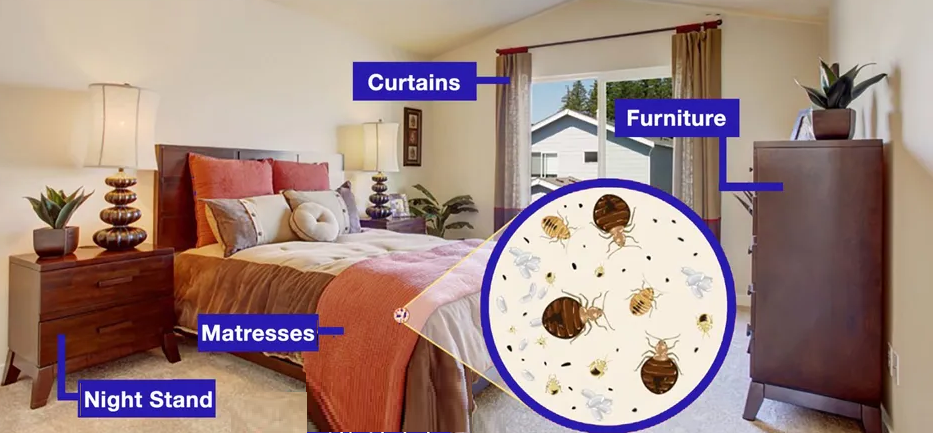


Checking for bed bugs when traveling is crucial to ensure a comfortable and pest-free stay. Bed bugs are small, parasitic insects that feed on human blood and are notorious for infesting beds and other furniture. Here's a detailed description of how to check for bed bugs when traveling:
Before you leave:
Research your accommodations and look for reviews or reports of bed bug infestations at your chosen accommodation. If there are multiple complaints, consider selecting another place to stay.
Pack essential items and bring a small flashlight, a magnifying glass, and a set of plastic bags to aid your inspection.
Upon arrival:
Store your luggage appropriately and avoid immediately placing your luggage on the bed or upholstered furniture. Instead, use a luggage rack (inspect it first) or put your bags in the bathroom or bathtub until you've completed the inspection.
Here are the common places where bed bugs are found:
Let's begin by visually inspecting the sleeping area and examining the headboard, mattress, box spring, and nearby furniture. Look out for small brown live bed bugs, molted exoskeletons, dark spots (fecal stains), or small bloodstains.
In active infestations, live bed bugs can usually be found crawling around the sleeping areas, while squashed dead bugs often leave red-brown stains on the mattress or bedding. Also, watch for tiny white eggs, light yellow casings, and other noticeable signs of bed bug activity.
After that, proceed to check the bedding. If possible, remove the sheets, pillows, and mattress cover, and inspect them thoroughly for any signs of bed bugs. Examine the bare mattress and box spring for bugs. Pay attention to the tufts of fabric along the mattress seams.
Next, examine the nightstand both inside and outside. Kneel and inspect the screw holes and outer edges along the sides of the nightstand. Search for signs of live bugs, eggs, and casings like in previous inspections. Additionally, open each drawer and look for any indications of bed bug activity.
Inspect the furniture:
Examine chairs, sofas, and any upholstered furniture in the room. Pay close attention to seams, crevices, and tufts, where bed bugs like to hide.
Scan the room:
Tiny bed bugs can hide in cracks and crevices, making them hard to spot. Shine a light behind your headboard or nightstand, and look for any sign of bugs crawling away, which indicates that your room is infested.
Look for physical evidence of an infestation by scanning for small, oval-shaped bugs (about the size of an apple seed), exoskeletons, fecal stains (dark spots), or bloodstains on sheets and mattresses.
Pay attention to common hiding spots:
Bed bugs prefer to hide close to their food source (you!). Check the seams, tufts, and tags of the mattress, box spring, and pillows.
Inspect upholstered furniture thoroughly, focusing on seams, crevices, and zippers.
Check behind the headboard, as bed bugs often cluster there.
Examine any cracks or crevices in wooden furniture, including bedside tables and dressers.
Stay vigilant during your stay:
Even if you don't find any signs of bed bugs during your initial inspection, you must remain vigilant throughout your stay. Bed bugs can be introduced to a room at any time.
Avoid placing your luggage or personal items directly on the bed or upholstered furniture.
If you find signs of bed bugs:
Notify the management immediately: If you discover any evidence of bed bugs, inform the hotel or accommodation management right away. Request a room change or find alternative accommodations if necessary.
Launder your clothes: If you suspect bed bugs have come into contact with your clothing, seal them in plastic bags until they can be laundered in hot water and dried on high heat.
Inspect your luggage: Before leaving the hotel, thoroughly inspect your luggage and personal belongings. Wipe down your suitcase with a damp cloth to remove any potential hitchhikers.
Remember, bed bugs can be found in a variety of places beyond hotels, such as on public transportation, public libraries, retail stores, and movie theaters.